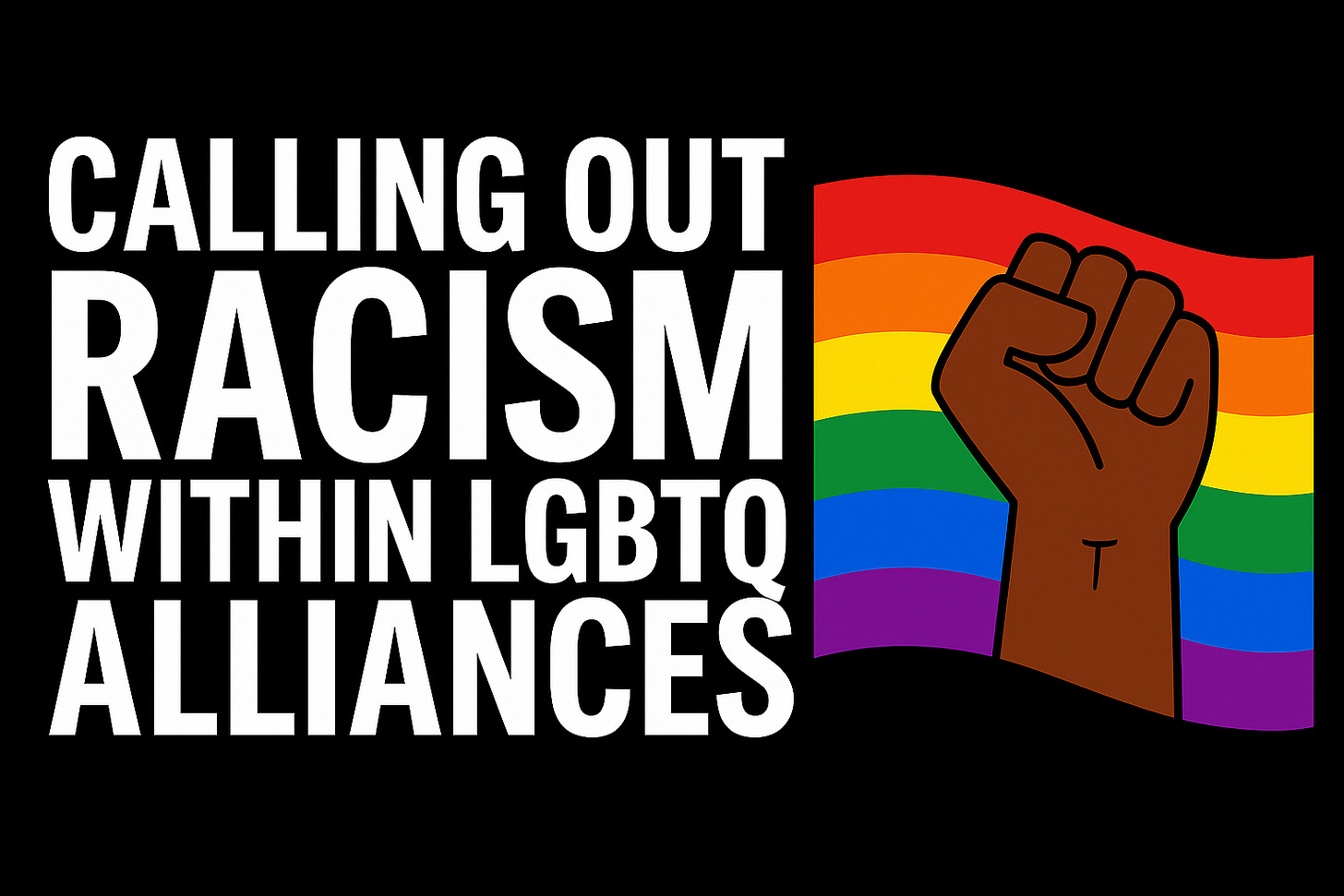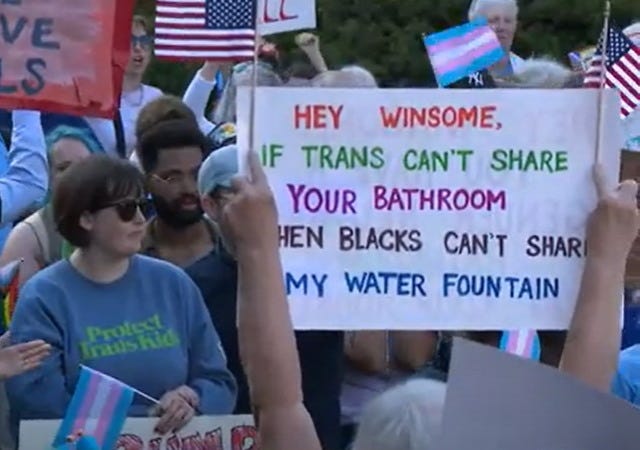Weaponizing Pain: A Call for Solidarity and Accountability in the Face of Racist Rhetoric
The image of a protest sign comparing transgender bathroom rights to segregated Black water fountains is not only a false equivalence, but it is a painful assault on Black history. For those of us whose families lived through Jim Crow segregation, the imagery of “separate water fountains” is not a rhetorical flourish; it is the embodiment of a national disgrace. It symbolizes degradation, humiliation, and a deliberate strategy to remind Black Americans of their “place” in a racial hierarchy. To see this language repurposed and weaponized at a public demonstration, held by someone outside the Black community, is not solidarity. It is a wound reopened.
Historical Weight of “Separate Water Fountains”
Segregated water fountains during the Jim Crow era were not simply inconveniences; they were state-sanctioned symbols of Black inferiority (Woodward, 2002). These decrees were enforced by law, by custom, and by violence. The Civil Rights Act of 1964 legally ended such public segregation, but the psychological scars remain. Scholars have long observed that such imagery represents a continuing trauma for Black communities, reminding us of a system designed to demean and dehumanize (Feagin, 2013).
To deploy this imagery casually in protest signage, particularly by someone outside the Black community, is to trivialize that suffering. It does not advance the cause of LGBTQ+ rights. Instead, it revives the very racism that Black and LGBTQ+ people, many of whom are the same, have long struggled against together.
Intersectionality and Shared Struggle
It is critical to note that the Black community and the LGBTQ+ community are not mutually exclusive. Black LGBTQ+ people live at the intersection of multiple marginalized identities and face compounded risks of discrimination, exclusion, and violence (Crenshaw, 1991; Battle et al., 2019). The fight for equity in one space cannot, and must not, come at the expense of another.
The LGBTQ+ movement has historically found allies within Black civil rights traditions, and the reverse is also true. From Bayard Rustin, an openly gay Black man who organized the 1963 March on Washington, to contemporary leaders in both movements, our struggles are deeply intertwined. To allow racism to infiltrate these alliances not only divides but weakens us all.
The Dangers of Racist Rhetoric
The protester’s sign sends a dangerous message. By invoking segregation-era water fountains, she did not just “make a point.” She resurrected a racist hierarchy that devalues Black lives. Scholars warn that such rhetoric is not harmless: it can normalize racist attitudes, reinforce stereotypes, and create wedges between communities that should be united (Bonilla-Silva, 2017).
This is particularly concerning in mission-driven spaces, where solidarity is necessary to combat authoritarian tendencies that undermine democracy. When marginalized groups are pitted against one another, the very forces of exclusion we oppose are strengthened.
Accountability and the Need for Repair
It is not enough to denounce this act as “misguided” or “insensitive.” The person holding the sign, though not representative of the LGBTQ+ community as a whole, must be held accountable for injecting racism into a protest space. Public accountability is necessary because her actions harm not only Black people outside the LGBTQ+ community but also Black LGBTQ+ individuals who find themselves erased or devalued in spaces meant to include them.
An apology to the Black community is not optional; it is essential. To weaponize Black trauma for rhetorical effect is an atrocity in itself. Accountability here is not about canceling; it is about repairing the trust needed for coalition-building.
A Call for True Solidarity
Solidarity requires more than showing up to rallies. It requires listening, learning, and respecting each community’s histories of oppression. True allies understand that advancing LGBTQ+ rights cannot be done by reopening the wounds of racial injustice. Just as we expect non-Black allies to stand against racism, we must expect LGBTQ+ allies to ensure their advocacy does not exploit Black pain.
For leaders, whether in public, private, or mission-driven organizations, the lesson is clear: watch for subtle and overt forms of racism that creep into your environments under the guise of progress. Left unaddressed, these dynamics fracture trust and weaken collective action.
Conclusion: Repairing What Has Been Broken
The sign at this rally is not just offensive; it is dangerous. It reveals how easily racism can slip into movements for justice if accountability is absent. But it also provides an opportunity: for LGBTQ+ leaders, allies, and organizations to take a stand against racism within their ranks and reaffirm a commitment to true solidarity with Black communities.
Our histories remind us that when marginalized groups stand together, progress is possible. But when racism is allowed to divide us, both justice and democracy are diminished.
It is time for those who claim the mantle of equality to prove it, not by invoking racist tropes, but by standing with Black communities in dignity, accountability, and shared struggle.
References
Battle, J., Pastrana, A., & Daniels, J. (2019). Queering social problems. Routledge.
Bonilla-Silva, E. (2017). Racism without racists: Color-blind racism and the persistence of racial inequality in America (5th ed.). Rowman & Littlefield.
Crenshaw, K. (1991). Mapping the margins: Intersectionality, identity politics, and violence against women of color. Stanford Law Review, 43(6), 1241–1299. https://doi.org/10.2307/1229039
Feagin, J. R. (2013). The White racial frame: Centuries of racial framing and counter-framing. Routledge.
Woodward, C. V. (2002). The strange career of Jim Crow. Oxford University Press.




